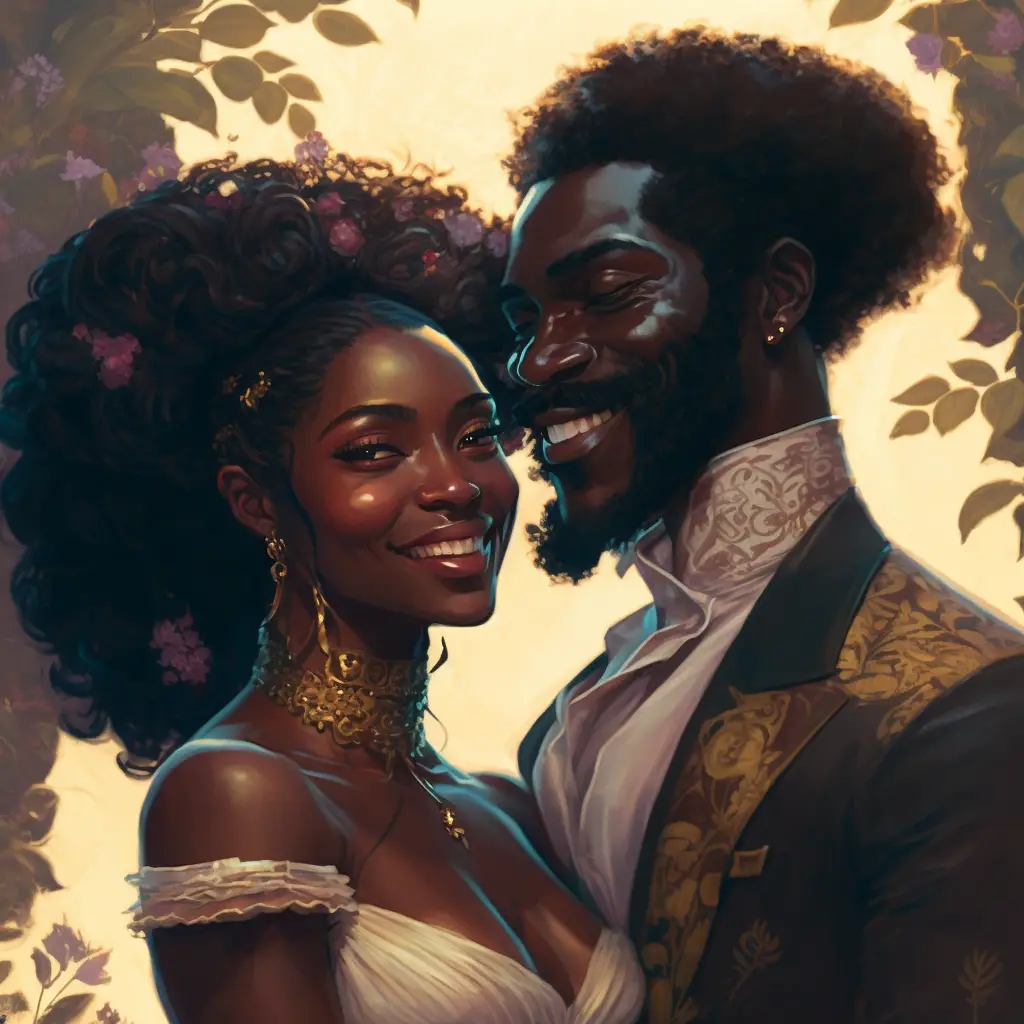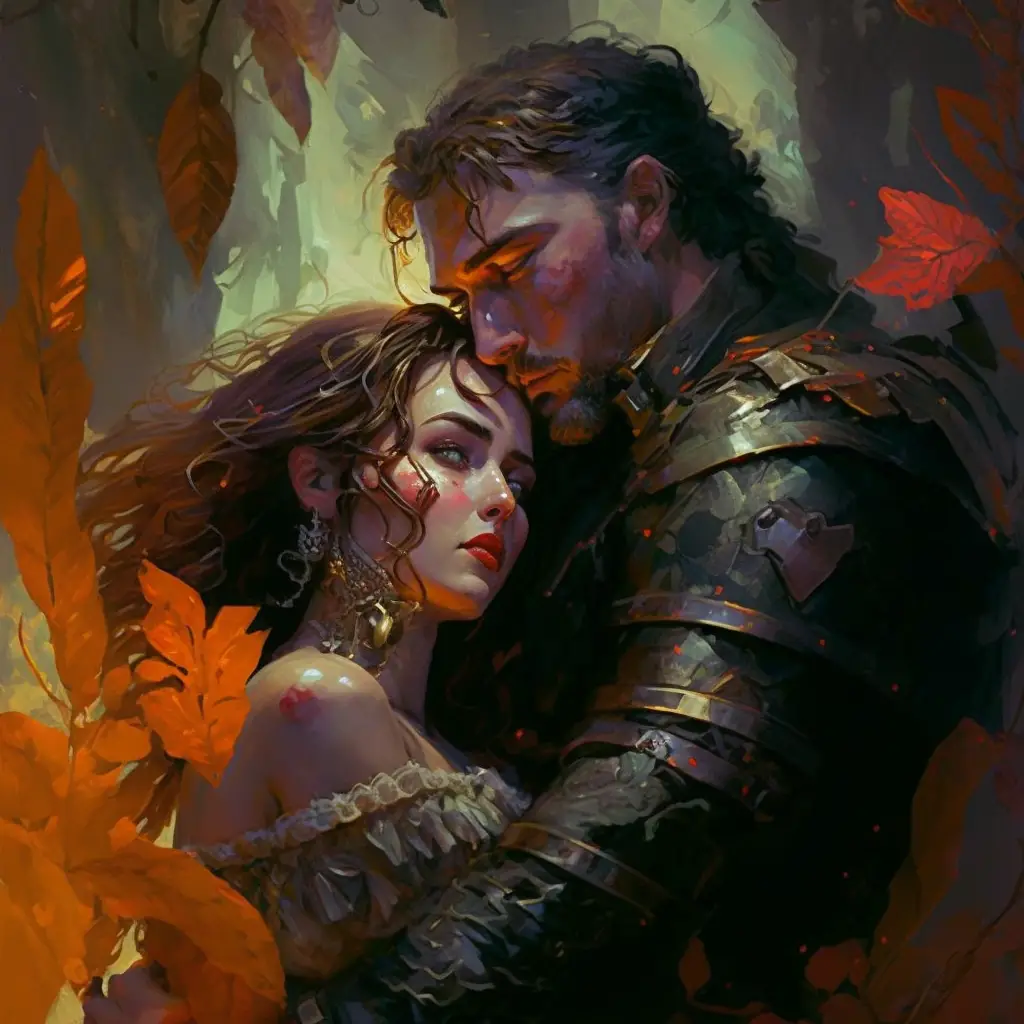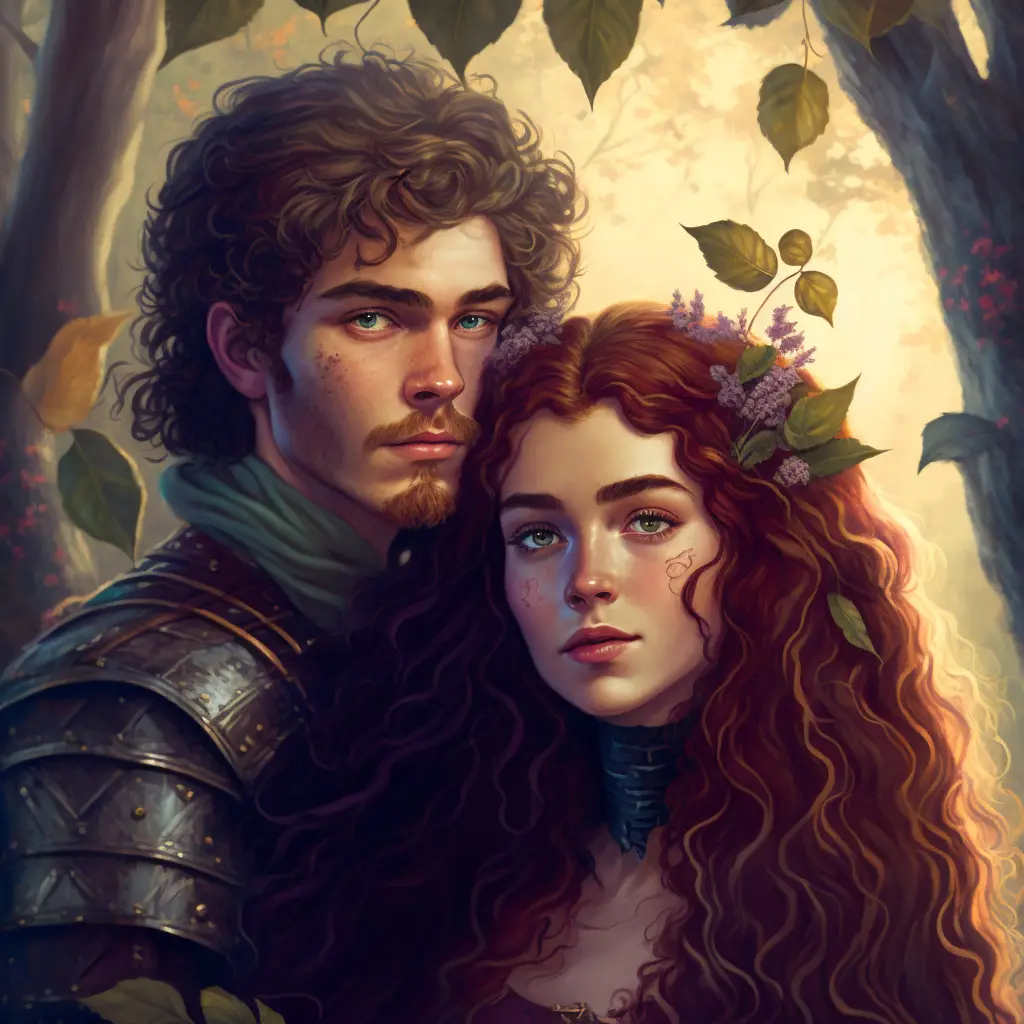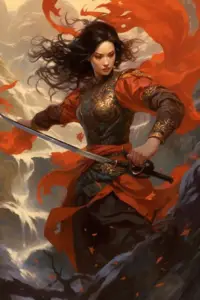The enemies to lovers trope is a popular one in fantasy literature, and for good reason – there’s something tantalizing about watching two characters who initially can’t stand each other eventually fall in love.
But crafting a believable enemies to lovers romance in a fantasy setting can be a challenge. How do you make readers believe that these two characters, who may come from completely different worlds and have fundamentally different values, could ever see eye to eye, let alone fall in love?
Here are a few tips for creating believable enemies to lovers romances in fantasy:
- Establish clear motivations for the characters’ initial animosity towards each other. In order for readers to believe that two characters could eventually fall in love, they need to understand why the characters are initially at odds. Maybe they come from different societies with conflicting values, or maybe they are fighting for the same goal and see each other as competition. Whatever the reason, make sure it is clearly established and makes sense within the context of the story.
- Show the characters’ and their relationship’s growth and development over time. As the characters’ relationship evolves from enemies to lovers, it’s important to show how they change and grow as individuals. Maybe they learn to see things from the other’s perspective, or maybe they are forced to confront their own biases and prejudices. This will help readers believe that the characters are capable of falling in love, even if they started out as enemies.
- Don’t rush the romance. It’s tempting to want to get to the “good part” of the enemies to lovers romance as quickly as possible, but it’s important to take the time to build up the tension and conflict between the characters first. Let them clash and argue, and then slowly reveal the moments of vulnerability and connection that hint at the possibility of a deeper relationship.
- Don’t rely on physical attraction alone. While physical attraction can certainly play a role in an enemies to lovers romance, it’s important to show that the characters have a deeper connection as well. Maybe they have shared goals or values, or maybe they have a shared history that brings them together. Whatever it is, make sure there is more to their relationship than just sexual tension.
- Explore the power dynamics between the characters. In an enemies to lovers romance, it’s common for there to be a power imbalance between the characters – one may hold a position of authority over the other, or one may be physically or intellectually stronger. This power dynamic can add an extra layer of tension and conflict to the relationship, but it’s important to handle it carefully. Make sure to show how the characters navigate and challenge these power dynamics as their relationship progresses.
- Don’t shy away from tackling tough issues. An enemies to lovers romance can be a great way to explore deeper issues and themes, such as prejudice, discrimination, and social justice. If you’re tackling these issues in your story, make sure to do so thoughtfully and with respect.
- Use dialogue and body language to show the characters’ changing feelings towards each other. As the characters’ relationship shifts from hostile to affectionate, make sure to use their dialogue and body language to show these changes. Maybe they go from snarling insults at each other to exchanging playful banter, or maybe they start to unconsciously mirror each other’s movements as a sign of their growing connection.
By following these tips, you can create a believable and satisfying enemies to lovers romance in your fantasy stories.
Want a deeper dive into how to implement each tip? If so, read on!
Establish Clear Motivations for Their Initial Animosity
In an enemies to lovers romance, it’s important to establish clear motivations for the characters’ initial animosity towards each other. This helps readers to understand why the characters are initially at odds, and makes it more believable that they could eventually fall in love.

In the addition, try to embue the characters with motivations that feel organic to each character and sympathetic to readers. This doesn’t mean that anyone needs to agree with either of the characters’ perspectives. Rather, it’s difficult for readers to root for a couple to fall in love if their initial animosity seems like it comes from a place of childishness and spite rather than a place of, say, understandable anger, hurt, or fear. The same applies for animosities that feel forced and jarring.
There are many different reasons that two characters might be initially at odds in a fantasy story. Here are a few examples:
- Different societies with conflicting values: Maybe the characters come from different societies that have different values, customs, or beliefs. This can create a natural conflict between them as they try to navigate their different ways of life.
- Competition for the same goal: Maybe the characters are both fighting for the same goal, whether it’s a coveted position, a valuable resource, or something else. This can create a sense of competition between them and make them see each other as enemies.
- Personal grudges or past conflicts: Maybe the characters have a personal grudge against each other, or have had a past conflict that has left them at odds. This can create a strong initial animosity between them, even if they are eventually able to move past it.
By establishing clear motivations for the characters’ initial animosity towards each other, you can create a believable and satisfying enemies to lovers romance that readers will enjoy.
Show the Characters’ and Relationship’s Growth Over Time
Showing the characters’ growth and development over time is an important aspect of crafting a believable enemies to lovers romance.
When two characters start out as enemies, it can be hard for readers to envision them falling in love. By showing how the characters change and grow as individuals, you can help readers believe that the characters are capable of falling in love, even if they started out as enemies.
Showing the Relationship’s Growth and Development
There are many different ways you can show the characters’ growth and development:

- One way is to have the characters learn to see things from each other’s perspective. This could involve showing the characters interacting with each other and coming to understand each other’s motivations, desires, and fears.
- Realizing they assumed the worst: Maybe one character realizes that the other was acting out of a sense of duty or obligation, rather than out of malice.
- Empathy: Or maybe one character comes to see that the other has been through a lot of trauma and is struggling to cope with it.
- Another way to show the characters’ growth and development is to have them confront their own biases and prejudices.
- Biases based on flawed social or cultural norms: Maybe one character has always looked down on the other’s society or way of life, and has to learn to see the value in it.
- Biases based on personal flaws: Or maybe one character has always been quick to judge the other, and has to learn to be more understanding and compassionate. By showing the characters confronting their own biases and prejudices, you can help readers believe that they are capable of falling in love, even if they started out as enemies.
Showing the Relationship’s Growth and Development: Examples
Here are a few examples of how you could show the characters’ growth and development over time in an enemies to lovers romance:
- In a fantasy story about two rival kingdoms, a princess and a prince start out as enemies, locked in a centuries-old feud between their families. As they spend more time together, they start to see each other in a different light. The princess begins to understand the prince’s motivations and desires, and the prince comes to see the princess as more than just a spoiled royal. Through their interactions, they learn to see things from each other’s perspective, and begin to form a deep connection.
- In a story about two rival factions, a soldier and a rebel start out as enemies, fighting on opposite sides of a brutal civil war. As they are forced to work together to survive, their opinions about each other change. The soldier comes to understand the rebel’s motivations and desires, and the rebel comes to see the soldier as more than just a brainwashed tool of the government. Through their interactions, they learn to see things from each other’s perspective, and begin to form a deep connection.
- In a fantasy book featuring two rival families, a lord and a lady start out as enemies, locked in a bitter dispute over land and resources. But as they spend more time together, they see different sides to the other. The lord begins to understand the lady’s motivations and desires, and the lady comes to see the lord as more than just a heartless aristocrat. Through their interactions, they learn to see things from each other’s perspective, and begin to form a deep connection.
Ultimately, the key to creating a believable enemies to lovers romance is to show the characters growing and changing over time. By showing how they learn to see things from each other’s perspective and confront their own biases and prejudices, you can help readers believe that the characters are capable of falling in love, even if they started out as enemies.
Don’t Rush the Romance
In an enemies to lovers romance, it’s important to take the time to build up the tension and conflict between the characters before rushing into the romance. Rushing the romance can make it feel unrealistic or forced, and can make it harder for readers to believe that the characters are truly falling in love.
One way to avoid rushing the romance is to:

- Let the characters clash and argue with each other before revealing the moments of vulnerability and connection that hint at the possibility of a deeper relationship. This allows the characters to establish their personalities and motivations, and helps to create a sense of tension and conflict between them.
- For example, you could have the characters argue about their different ideologies or goals, or have them compete against each other in some way. This will create a sense of tension and conflict between the characters, and will make it more believable when they eventually start to form a deeper connection.
- Show their opinions and thoughts on each other change, and how that leads them to take new action. It’s not just about the characters’ having a mometary realization that their love interest is more than they initially thought they were. Take the next step and show how that isn’t just a fleeting thought, but a recognition that impacts their attitude, behavior, and decisions moving forward in the relationship, and in the plot.
- Another way to avoid rushing the romance is to slowly reveal increasing respect and tenderness between the characters. This can be done through dialogue, body language, or inner monologue.
- For example, you could have the characters exchange a meaningful look, or have one character confide in the other about a personal problem or fear. These moments of vulnerability and connection can help to build a foundation for the romance, and will make it more believable when the characters eventually fall in love.
Ultimately, the key to creating a believable enemies to lovers romance is to take the time to build up the tension and conflict between the characters, and to slowly add and increase moments of respect, trust, connection, tenderness, and, eventually, affection. By doing this, you can create a satisfying and believable romance that readers will enjoy.
Don’t Rely on Physical Attraction Alone
In an enemies to lovers romance, it’s important to show that the characters have a deeper connection beyond just physical attraction. Relying on physical attraction alone can make the romance feel shallow or superficial, and can make it harder for readers to believe that the characters are truly falling in love. Love, after all, is different from lust.

One way to show that the characters have a deeper connection, one beyond only the physical, is to focus on their shared goals or values.
For example, maybe the characters are both fighting for a common cause, such as faith, social justice, or freedom from a corrupt authority. This shared goal can bring them together and create a sense of commonality between them, even if they are initially at odds with each other.
Another way to show that the characters have a deeper connection is to focus on their shared history. Maybe they have a shared past that brings them together, or maybe they have a shared experience that helps them to understand each other on a deeper level. This shared history can create a sense of familiarity and connection between the characters, and can help to make the romance more believable.
Ultimately, the key to creating a believable enemies to lovers romance is to show that the characters have a deeper connection beyond just physical attraction. By focusing on their shared goals or values, or their shared history, you can create a satisfying and believable romance that readers will enjoy.
Explore the Power Dynamics
In an enemies to lovers romance, the power dynamic between the characters can add an extra layer of tension and conflict to the relationship. This power dynamic can be based on things like a position of authority, physical or intellectual strength, social status, or supernatural abilities and powers.
It’s important to handle this power dynamic carefully in order to create a believable and satisfying romance. One way to do this is to show how the characters navigate and challenge these power dynamics as their relationship progresses. This can be done through dialogue, body language, or inner monologue.

For example, you could have the characters argue about their different positions of power, or have one character try to assert their authority over the other. You could also show the characters working together to find a way to balance their power dynamic, or have one character learn to accept the other’s strength and authority.
Another way to handle the power dynamic is to explore the ways in which the characters are affected by it. Maybe one character is struggling with feelings of inadequacy or insecurity because of their lower position in the power dynamic, or maybe the other character is struggling with feelings of loneliness or isolation because of their higher position. By exploring these emotions, you can create a deeper understanding of the characters and make their romance more believable.
Ultimately, the key to creating a believable enemies to lovers romance is to explore the power dynamics between the characters and show how they navigate and challenge these dynamics as their relationship progresses. By doing this, you can create a satisfying and believable romance that readers will enjoy.
Conclusion
Enemies to lovers romances are a beloved trope in fantasy literature that can add depth and complexity to a story. However, in order to create a believable and satisfying enemies to lovers romance, it’s important to establish clear motivations for the characters’ initial animosity, explore the power dynamics between them, and show their growth and development over time.
It’s also crucial to take the time to build up the tension and conflict between the characters before rushing into the romance, and to show that they have a deeper connection beyond just physical attraction. By following these guidelines, writers can craft compelling enemies to lovers romances that will keep readers turning the pages.








